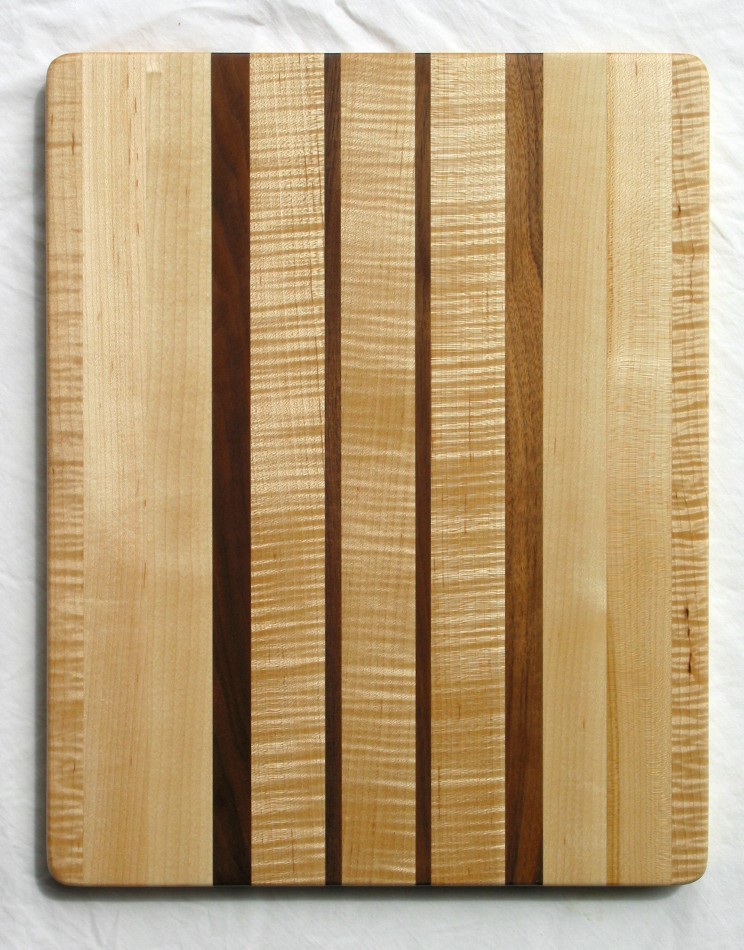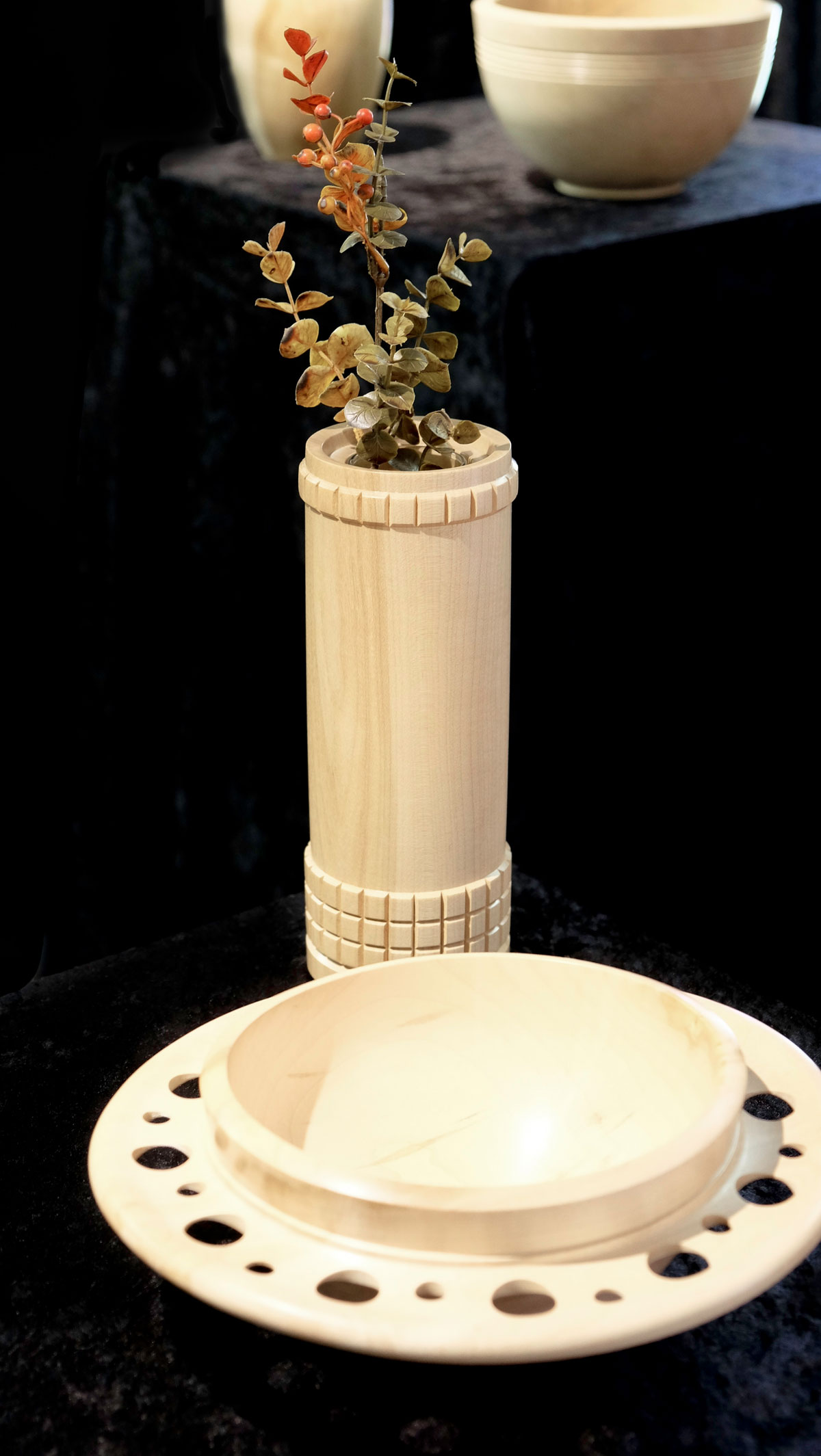About Cutting Boards
People often say that they are too nice to cut on but…
the fact is that they hold up really well. Cutting on a wooden board is gentle on your knives and an assortment of cheeses, fruit, and charcuterie laid out on a beautiful board makes a wonderful display at the appetizer table.
My boards are finished with a mixture of beeswax and mineral oil which is food safe and which will hold up to numerous washings. When the finish begins to dull, as it will with use, it can be rejuvenated by applying additional oil/wax mixture or mineral oil alone.
For those who are genuinely reluctant to cut on one of my boards, I recommend cutting on one side and leaving the other pristine for display or serving.
Wooden boards should be washed shortly after use in hot soapy water, rinsed, and dried in a position that allows air to circulate around all sides. Place the board in a dish draining rack, on a trivet, or lean it against a wall or cupboard until it dries. Stubborn food residue can be removed by rubbing gently with a standard green scotchbrite pad while washing.
I take great care to arrange the grain in my boards to minimize warping, but the key to keeping your board flat is to NOT leave it soaking in the sink and to dry it as described above. If a wet board is laid flat on a counter, the face exposed to air will dry while the face in contact with the counter will not and the board will warp.
Some folks ask if it’s OK to cut raw meat on a wooden board. It is.
While it’s best to have two separate cutting boards; one for meats and one for vegetables, proper sequencing of your prep work (cut veggies first, then meats) and proper cleaning and drying of the board will prevent cross contamination.
One of the most famous studies on the safety of wooden cutting boards was conducted by Dean O. Cliver, PhD, Professor of Food Safety at the University of California- Davis. In this study, Cliver contaminated new and used cutting boards, both wood and plastic, with bacteria commonly present on raw meats and evaluated how long the bacteria remained viable and which cleaning methods were best.
Cliver’s synopsis of the study can be found here: http://faculty.vetmed.ucdavis.edu/faculty/docliver/Research/cuttingboard.htm. In it, he had this to say:
• “…wooden boards that had been used and had many knife cuts acted almost the same as new wood, whereas plastic surfaces that were knife-scarred were impossible to clean and disinfect manually, especially when food residues such as chicken fat were present.”
• “…we regard it as the best epidemiological evidence available to date that wooden cutting boards are not a hazard to human health, but plastic cutting boards may be”
Whether you use your boards for all things, as I do, or are selective about their use, I think you will love having one in your kitchen!

CURLY MAPLE, WALNUT & MAPLE CUTTING BOARD
